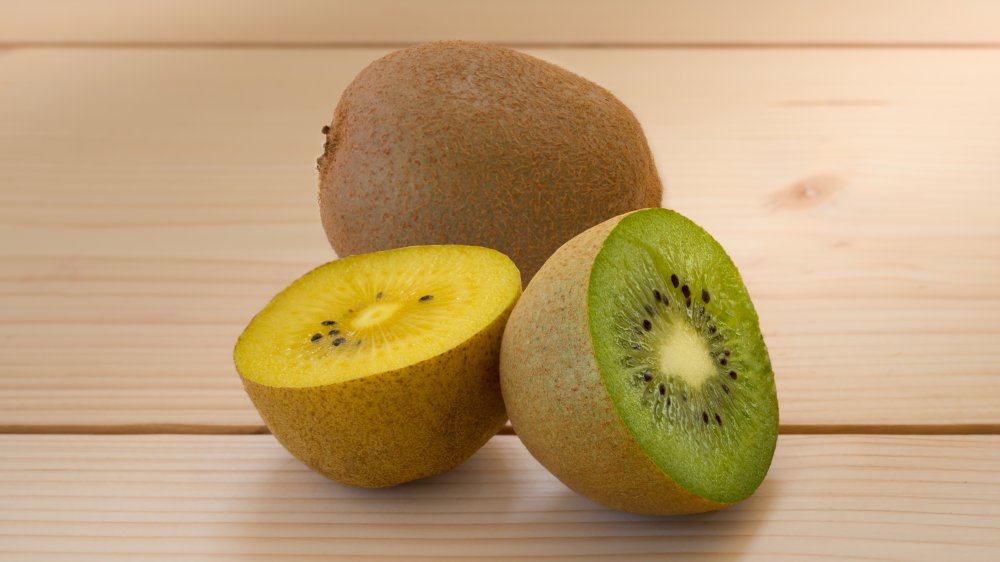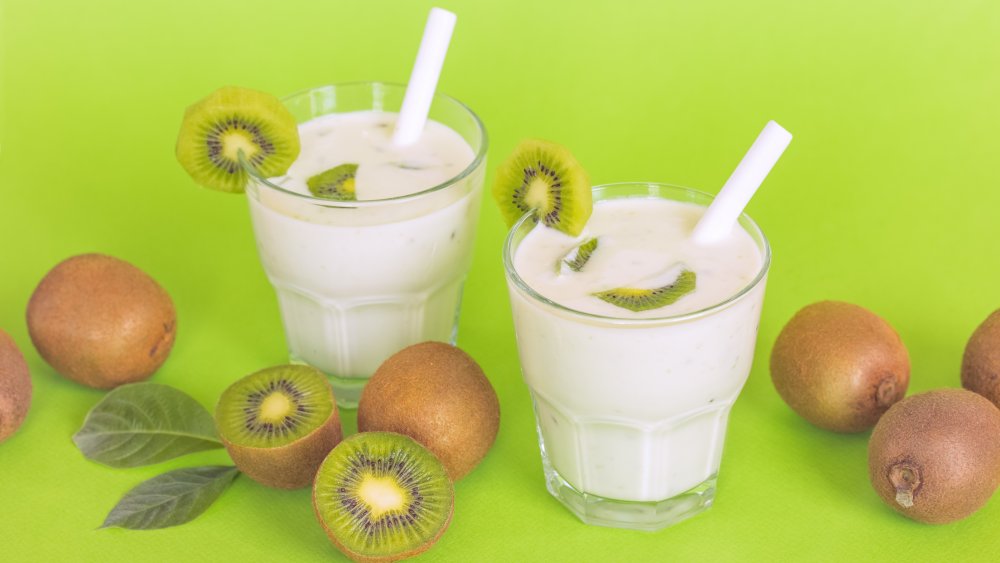The Subtle Difference Between Gold Kiwifruit And Green Kiwifruit
Kiwifruits are one of the most nutritionally dense fruits on the market. Both golden and green kiwi varieties contain essential vitamins, antioxidants, and nutrients. However, while they can both serve as a healthy and low-calorie snack, there are distinct differences between the two types of kiwifruits.
The most obvious difference is in their appearance. When sliced open, golden kiwifruit has a nice golden-yellow interior, while the flesh of green kiwis have a pleasant deep green hue and are studded with black seeds. The golden variety, on the other hand, has fewer seeds and a smaller core. On the outside, the golden variety has little to no fuzz on their skin, while green kiwifruits have a fuzzy exterior and a more oval shape.
Golden kiwi is sweeter and has a softer texture than its green counterpart, which has a tangier and more tropical flavor, according to Zespri. The golden kiwi's pleasant sweetness makes it the perfect addition to ice creams, pies, and cakes, or they can even be served as a dessert on their own. Green kiwifruits are a great complement to smoothies and glazes, as well as to many savory dishes.
Golden and green kiwifruits are packed with nutrition
The other main difference is the availability of the fruits. Golden kiwifruits are typically only in season from June to August, whereas green kiwis are generally available year-round, but reach their peak flavor in the coldest part of the year, according to Colorful Plates.
Regardless of color, both varieties of kiwifruit contain many nutritional benefits. Kiwifruit boasts high levels of folate, vitamin E, fiber, and more vitamin C than any other fruit, according to Livestrong. One cup of sliced kiwifruit also contains around 575 milligrams of potassium, an essential electrolyte that helps improve heart health and blood pressure.
Golden kiwi does contain a slightly higher vitamin C content and about thirty percent more folate, although green kiwis have a leg up as a source of dietary fiber and are lower in sugar. In any case, both varieties of this tropical fruit pack a nutritious punch and are a healthy, tasty addition to any menu.

